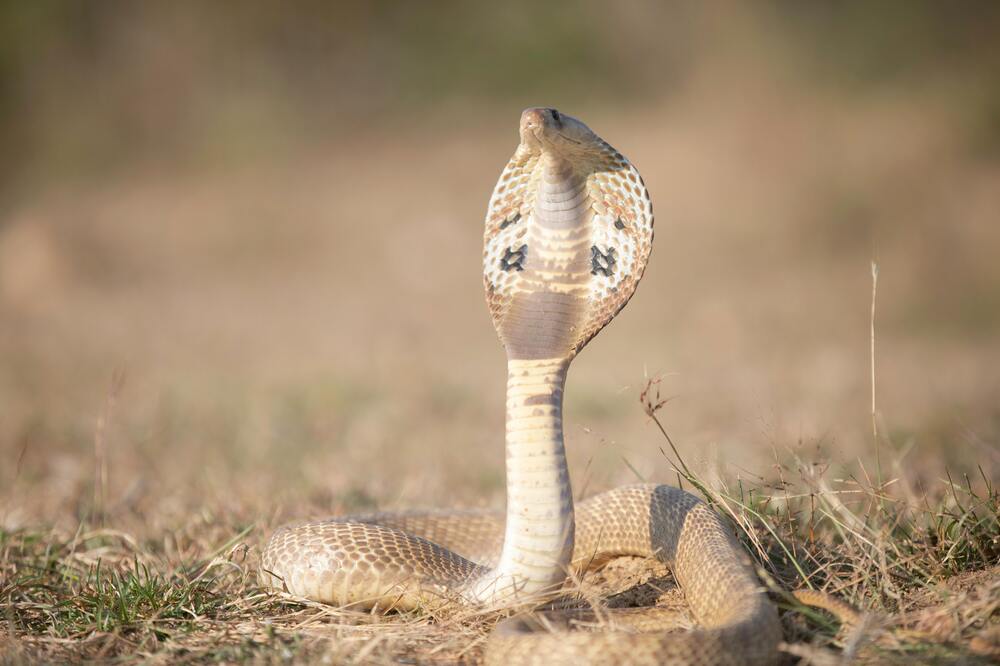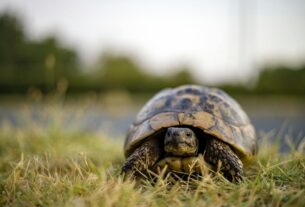King cobra:
- Common Name: King Cobra
- Type: Reptile
- Diet: Carnivore (eats meat)
- Average Lifespan in the Wild: 20 years
- Size: 13 feet long
- Weight: Up to 20 pounds

The king cobra is one of the most dangerous snakes in the world. It can stand up and look anyone in the eye. When it senses fear, it lifts part of its body off the ground and may then attack.
king cobras are shy and try to stay away from people. When scared, it spreads its hood and makes a hissing sound like a growling dog. King cobras can grow up to 18 feet long. This makes them the longest poisonous snakes in the world.
Poison:
Their poison is not the strongest of all snakes, but they can give a lot in one bite—up to two-tenths of an ounce.
This is enough to kill 20 people or even an elephant. King cobra poison affects the breathing parts of the brain, causing breathing to stop and heart failure.
Which injection is used for snake bites?
To save a person from the poison, an antivenom injection is given. It helps remove the poison from the body.
Habitat and Behavior:
King cobras live in the rainforests and plains of India, southern China, and Southeast Asia. Their colors can be different depending on where they live. They can be found in forests, bamboo areas, mangrove swamps, high-altitude grasslands, and near rivers.
King cobras mainly eat other snakes, both venomous and nonvenomous. They also eat lizards, eggs, and small animals. They are the only snakes in the world that build nests for their eggs and fiercely guard them until the baby snakes hatch.
Rattle Snake:
- Common Name: Eastern Diamondback Rattlesnake
- Diet: Carnivore (eats meat)
- Average Lifespan in the Wild: 10 to 20 years
- Size: 5.5 feet long
- Weight: 5 pounds

There are more than 24 species of rattlesnakes, and all of them have the famous rattle at the tip of their tails. The snake uses the rattle to warn others to stay away or to distract prey. The rattle noise comes from hollow, bony segments banging together.
As rattlesnakes get older, the segments on their rattles wear out and break off. When a snake sheds its skin, new parts grow.
Rattlesnake Like other snakes, they have no ears and cannot hear most sounds. They sense movement by feeling vibrations in the ground. Their eyes can see well even in low light.
The rattlesnake has a triangular head with a hollow spot between the eyes and nostrils called a pit. This pit is a sensory organ that helps the rattlesnake hunt in the dark by detecting body heat.
Poison:
Most rattlesnake bites inject venom that damages tissue and affects the circulatory system. It destroys skin tissues and blood cells, leading to internal bleeding. Rattlesnake venom is mostly made up of hemotoxic components.
Treatment of Rattle Snake:
All patients bitten by rattlesnakes should be admitted to the hospital for treatment with antivenom. They need close monitoring, including frequent checks of swelling every 1-2 hours for about 24 hours after the bite is under control.
Habitat and Behavior:
Rattlesnakes are found throughout the Americas, ranging from Canada to Argentina. In the United States, they are especially common in the southwest. They live in diverse habitats such as plains, deserts, and mountains, but they often prefer rocky environments.
Depending on the temperature, rattlesnakes may sunbathe on rocks for warmth or seek shade under rocks to cool off.
Rattlesnakes are meat-eaters that hunt small prey like mice, rats, and other rodents, as well as smaller birds. They hunt quietly, waiting for their prey and then biting with venomous fangs to paralyze it. After killing their prey, rattlesnakes swallow it head first. They often rest while their meal is being digested.
Eastern Diamondback Rattlesnake:
- Common Name: Eastern Diamondback Rattlesnake
- Diet: Carnivore (eats meat)
- Average Lifespan in the Wild: 10 to 20 years
- Size: Up to 5.5 feet long
- Weight: Up to 5 pounds

The eastern diamondback rattlesnake is the largest venomous snake in North America. Some can grow up to 8 feet long and weigh as much as 10 pounds.
Poison:
The venom of the Eastern Diamondback rattlesnake is a powerful hemotoxin that kills red blood cells and damages tissue. Bites can be extremely painful and potentially fatal to humans. Fortunately, antivenom is widely accessible in areas where these snakes are found, and fatalities from bites are rare.
Habitat and Behavior:
Eastern Diamondback rattlesnakes usually live in dry pine forests, sandy woods, and scrubby areas along the coast from southern North Carolina to Florida and west to Louisiana. They are famous for their eye-catching pattern of black diamonds with light centers bordered by yellow, making them one of the most visually striking reptiles in North America. These snakes naturally hunt and eat pests like rats and mice, as well as squirrels and birds.
Despite being seen as deadly and aggressive, diamondback rattlesnakes are actually shy and prefer to stay away from humans. They only bite defensively when they feel threatened. Most bites happen when people provoke, try to capture, or kill them. They can strike accurately up to one-third of their body length.
Black mamba:
- Common Name: Black Mamba
- Scientific Name: Dendroaspis polylepis
- Diet: Carnivore (eats meat)
- Size: Up to 14 feet long
- Weight: Up to 3.5 pounds
Despite being seen as deadly and aggressive, diamondback rattlesnakes are actually shy and prefer to stay away from humans. They have caused many human deaths, and African myths often exaggerate their abilities to legendary levels. Because of these traits, the black mamba is widely regarded as the world’s deadliest snake.
Poison:
Before they made the black mamba antivenom, a bite from this dangerous snake almost always caused death, often within about 20 minutes. Unfortunately, antivenom is still hard to get in rural areas where black mambas live. This leads to many deaths from their bites.
People moving into areas where black mambas live not only put the snakes in danger but also make it more likely for people to have dangerous encounters with them.
Habitat and Behavior:
Black mambas inhabit the savannas and rocky hills of southern and eastern Africa. They are Africa’s longest venomous snake, capable of reaching up to 14 feet in length, though the average is around 8.2 feet. Known for their speed, they are among the fastest snakes, moving at speeds up to 12.5 miles per hour when provoked.
Black mambas are usually shy and will try to run away if they feel threatened. But if they can’t escape, they might act aggressively. They might lift their heads, raise about a third of their body off the ground, spread their neck like a cobra, open their black mouths, and hiss loudly. If they continue to feel threatened, the mamba will bite multiple times, injecting powerful neurotoxins and cardiotoxins with each bite.
Death Adder:
- Common Name: Common death adder
- Scientific Name: Acanthophis antarcticus
- Diet: Eats frogs, small reptiles, birds, and mammals
- Average Lifespan: Up to 15 years
- Size: Males average about 44 cm in length, while females, which are larger, average about 58 cm. They can grow up to a meter in length.
The common death adder is easy to recognize once you see it, but it’s hard to spot because it blends in so well. These snakes are great at hiding, which helps them hunt. Unlike many other venomous snakes that go looking for prey, death adders wait patiently for prey to come close.
Poison:
The venom of the common death adder is very dangerous and can cause paralysis or even death. It strikes faster than any other venomous snake in Australia. A person can die within six hours after being bitten.
Habitat:
Common death adders are solitary and active at night. During the day, they hide in soft soil or under leaves. They are very good at blending in with their surroundings because of their striped patterns. This helps them hide in forests, bushes, and fields.
These snakes aren’t aggressive, but their hunting style and camouflage make them more dangerous to people who enter their habitats.




